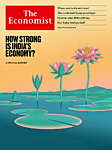去年,チェルノブイリの放射線を吸った雨と鳥の数の関係について調べた研究者のハナシをご紹介したんでした。
怖いのは,鳥に影響があるんだったらヒトにも影響があるはずだ,と調べてみたら,
この、鳥で使った方法で、人間についても調べてみた。具体的には、1986年、1987年の前年比で人の死亡率の変化を調査。すると、統計的にexcess death 過剰な死と呼ばれる、死亡率の増加が見られた。この増加は、鳥と同じく放射線量との間に関連が見られた。過剰な死者の数は、全米で4万人と見積もられ、チェリノブイリ雨が降った直後から4カ月間続いた。その後9か月目にも増えた。特に死者が多かったカテゴリーは、乳児、65歳以上の老人、AIDS等の免疫不全を抱えている人達の3種類。いずれも免疫に関係があると思われ、乳児は免疫機制が完成しておらず、年寄りは免疫が弱っている。
20年、30年たって癌が発生するという影響もあるが、こうして直後にあらわれる影響もあるのだ。
ってなことで,遠く離れた米国で,老人と乳幼児の死亡率が増えていた,ということなんですな。
米国で乳児死亡率が上昇その4 Deadly-Deceit
となると,去年の福島原発事故の影響が気になるわけですが,研究チームが,ちゃんと調査していて,エコノミストに出てました。
Surviving fallout

With this in mind, a team led by Timothy Mousseau of the University of South Carolina and Anders Moller of the University of Paris-Sud set out to compare bird species dwelling near the Fukushima plant with those living at the site of another nuclear incident that scored a seven on the INES: the Ukrainian town of Chernobyl, where disaster struck in 1986. Remarkably, they found that some species seem to develop a tolerance for radioactivity over time.
University of South Carolina and University of Paris-Sudのチームが福島の近くに生息している鳥の調査を行ったというんですな。
To do this, during July 2011, the researchers counted and identified birds at 300 locations near Fukushima that had radiation levels as low as 0.5 microsieverts per hour and as high as 35 (for comparison, dental X-rays rarely expose patients to more than 0.05 microsieverts). Then they compared these results to bird data collected in areas that had the same range of radiation levels near Chernobyl between 2006 and 2009.
去年7月に,0.5マイクロシーベルト/時から35マイクロシーベルトまでの福島近辺300箇所で鳥のデータを集めて,チェルノブイリのデータと比較した。
Their results, published in Environmental Pollution, show that as radiation levels in an area rose to 35 microsieverts per hour, the average number of birds dropped by almost a third compared with the areas where radiation levels were only 0.5 microsieverts per hour. This makes sense: in those areas with a high level of radiation, living things would tend to die or sicken and fail to reproduce. However, when researchers looked at the 14 bird species that lived in both regions, they found that the same level of radiation was associated with twice as large a drop in bird numbers in Fukushima as in Chernobyl.
35マイクロシーベルトの地域では,0.5マイクロの地域より3分の1ほど平均して鳥の数が少なかった。これは、放射線量が高いほど,死んだり,病気になったり,生殖できなかったりするということで理解できるが,福島の方が同じレベルの放射線量の地域でも鳥の数の減り方が二倍大きかった。
The reasons for this are not clear. It is possible that the composition of the radionuclides are proving more dangerous to the Fukushima birds than they are to the birds near Chernobyl. But Dr Mousseau suggests a more likely explanation is that evolution has already been at work near Chernobyl, killing off individual birds that cannot cope with the background radiation and allowing the genes of those that have some tolerance to be passed on. The birds at Fukushima are only beginning to face the evolutionary challenge of living in a radioactive world.
この違いの理由はよく分かっていないが,チェルノブイリで進化が働いてきた可能性がある,と研究者。放射線に耐えない鳥は死んでしまい,耐性のある遺伝子が生き残ったのかも。福島の鳥達は,まだ環境変化に直面したばかりなのだ。
というわけで,この記事は鳥の数が減っていることよりも,放射線への耐性が生じる可能性をテーマにしていますが,とにかく,福島で鳥の数がかなり減っているということは確かなようですな。
もし,去年の動画のじいさんの言ってることが正しいとしたならば,
ヒトにも影響が出ている可能性があって,
福島近辺の過剰な死,特に新生児や老人が余計に亡くなっているかも知れない,ということになりますな。
ただ,米国で四万人,という数字がどれほどのモノか,という議論はあって,
四万人,横一列に並べて,片っ端から撃ち殺していけば悪魔の所業になりますが,
直接の因果関係が証明できず,
趨勢として死亡率が,率としては本の少し上がっただけで,
集計すると結果的に四万人になった
と言う場合,
自動車事故で毎年何人死んでるんだ,自動車をやめるのか,
みたいなレトリックで恫喝オヤジがノシて来るんですな。
こういうハナシは,自動車や公共インフラを比較に出してくるのは間違いで,
公害や,薬害と比較すべきでしょう。
アスベストを垂れ流している工場が,今、この時代に見つかったらただじゃ済まないし,その生産物がどんなに低コストで役にたっても受け入れられることはありません。アスベストも肺がんになるのは何十年も経ってからなんですな。
公害訴訟でも,健康被害と工場の廃物との因果関係の立証が難しかったわけですが,いまどき,因果関係が完全に立証できなければおとがめなし,というわけには行かないんで。
原発も,アスベストと同じ扱いに,即座になっておかしくないんですが,そうならないのは、やはり,いろんなバイアスがかかってしまっているから,ということになるんでしょうね。
このハナシ,日本でも報道されてるんですかね。









